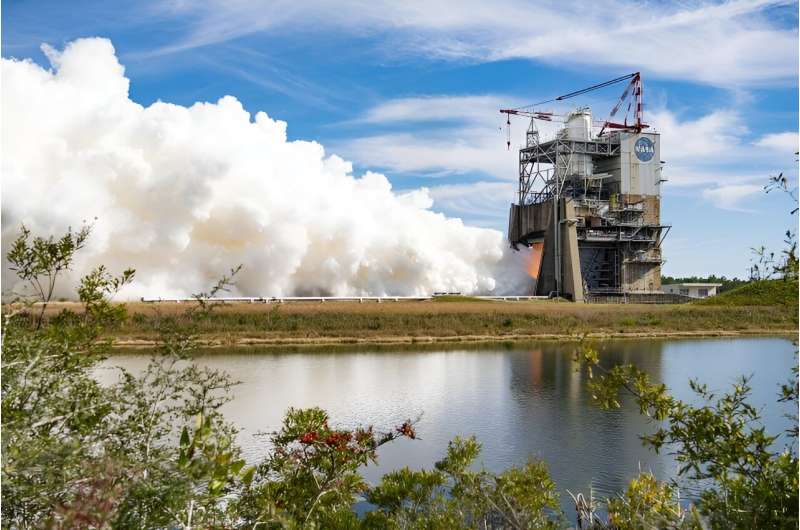Aerojet Rocketdyne, an L3Harris Technologies Company and lead engines contractor for the SLS rocket, is incorporating new manufacturing techniques and processes, such as 3D printing, in production of new RS-25 engines.
Crews gimbaled, or pivoted, the RS-25 engine around a central point during the almost 11-minute (650 seconds) hot fire on the Fred Haise Test Stand at NASA's Stennis Space Center near Bay St. Louis, Mississippi. The gimbaling technique is used to control and stabilize SLS as it reaches orbit.
During the Nov. 29 test, operators also pushed the engine beyond any parameters it might experience during flight to provide a margin of operational safety. The 650-second test exceeded the 500 seconds RS-25 engines must operate to help power SLS to space. The RS-25 engine also was fired to 113% power level, exceeding the 111% level needed to lift SLS to orbit.
The ongoing series will stretch into 2024 as NASA continues its mission to return humans to the lunar surface to establish a long-term presence for scientific discovery and to prepare for human missions to Mars.
Four RS-25 engines fire simultaneously to generate a combined 1.6 million pounds of thrust at launch and 2 million pounds of thrust during ascent to help power each SLS flight. NASA and Aerojet Rocketdyne modified 16 holdover space shuttle main engines, all proven flightworthy at NASA Stennis, for Artemis missions I through IV.
Every new RS-25 engine that will help power SLS also will be tested at NASA Stennis. RS-25 tests at the site are conducted by a combined team of NASA, Aerojet Rocketdyne, and Syncom Space Services operators. Syncom Space Services is the prime contractor for Stennis facilities and operations.
Provided by NASA



